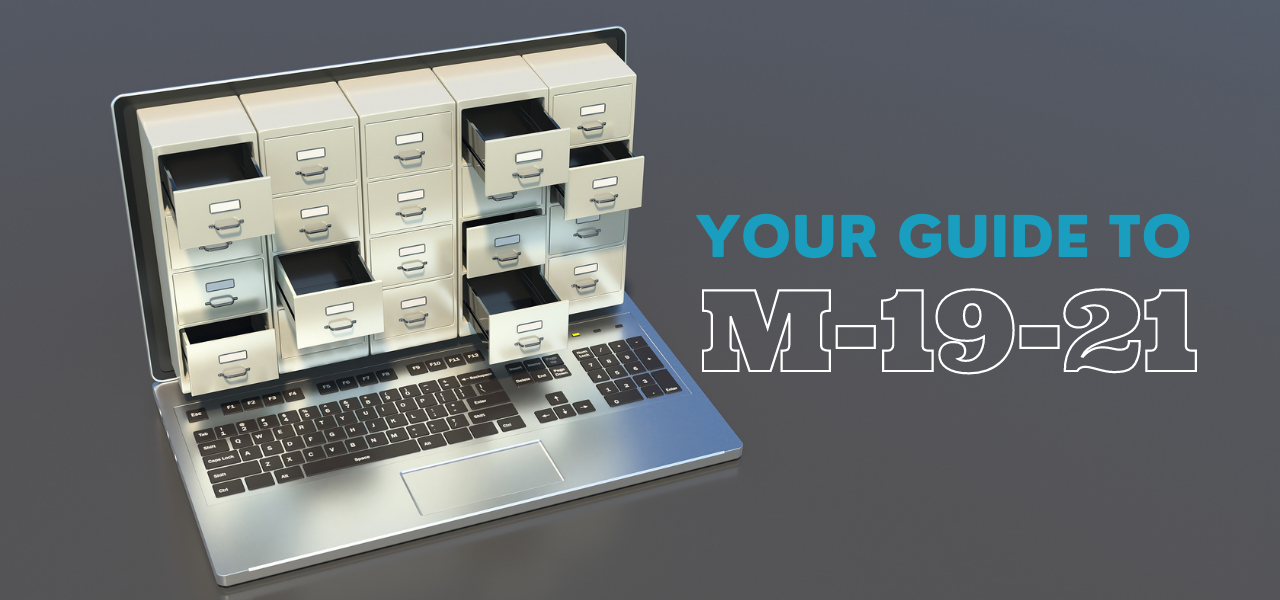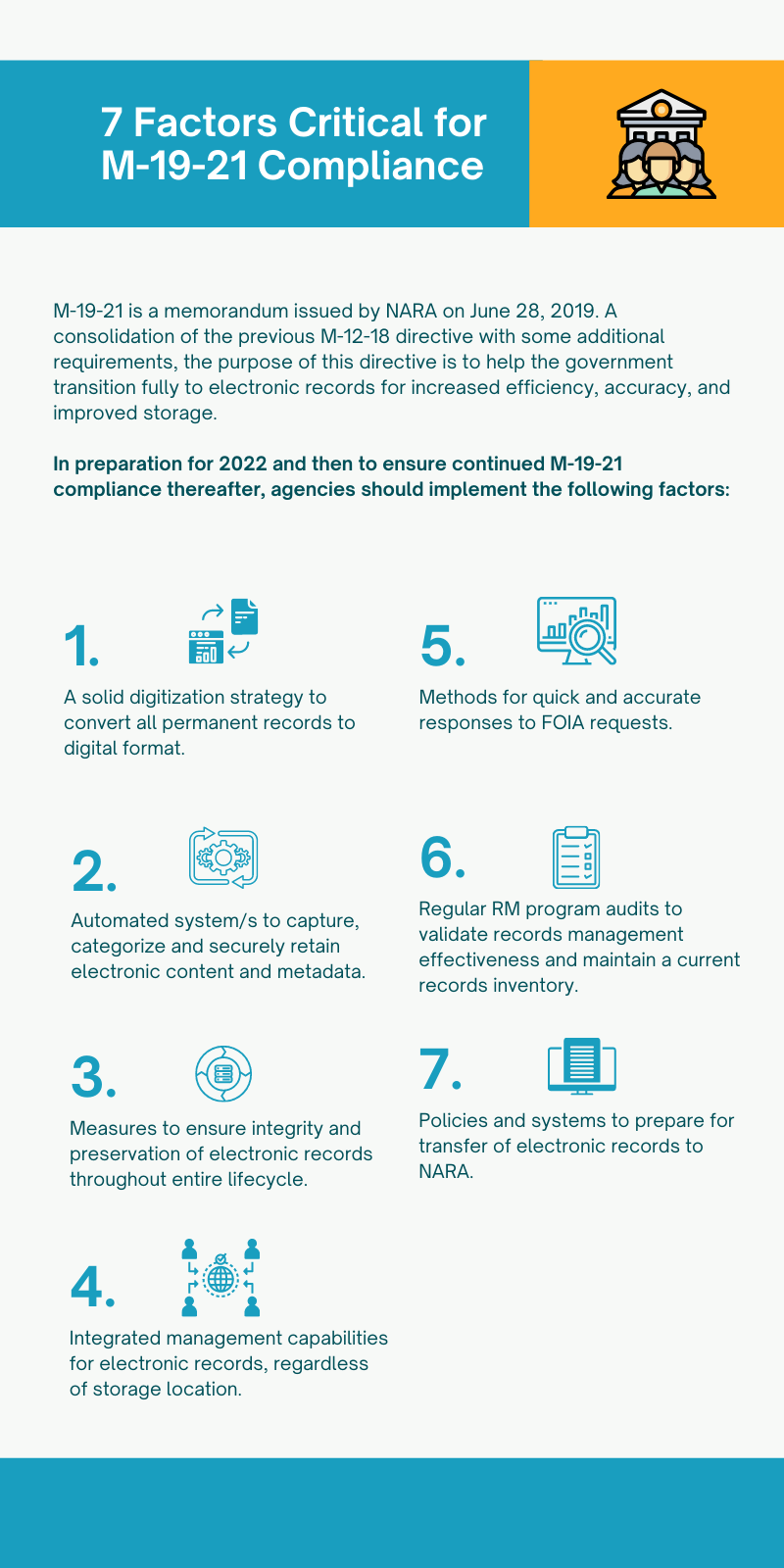
Directive M-19-21: What it is and How to Achieve Compliance
Electronic Records Management (ERM)
The National Archives and Records Administration (NARA) and Office of Management and Budget (OMB) set forth the government-wide policy M-19-21 as a directive to progress how government records are managed. Read on to learn what this directive is, who it impacts, and seven factors necessary to achieve compliance.
- What Is M-19-21?
- Who Does M-19-21 Impact?
- When Is The M-19-21 Deadline?
- 7 Factors Necessary to Achieve Compliance
What Is M-19-21?
M-19-21 is a memorandum issued by NARA on June 28, 2019. A consolidation of the previous M-12-18 directive with some additional requirements, the purpose of this directive is to help the government transition fully to electronic records for increased efficiency, accuracy, and improved storage.
While the full mandate can be accessed here, some key points of M-19-21 are:
- Federal agencies should manage all permanent electronic records in an electronic format by 2019.
- Permanent federal records AND appropriate metadata must be created, managed and maintained in electronic format by 2022.
- Federal agencies must close their own records storage facilities and transfer any inactive, temporary paper records to a Federal Records Center or Commercial Storage Facility by 2022.
- Federal agencies must maintain a records management program that complies with the Federal Records Act (details in Section 1.4)
- NARA and OMB also outline how they will assist transitioning agencies in Section 2.
Who Does M-19-21 Impact?
M-19-21 is a government-wide initiative that applies to all federal agencies.
When Is The Deadline?
The deadline for digitally managing all permanent records passed on December 31, 2019 – meaning many agencies have fallen behind already.
However, this initiative has been designed to transition agencies into managing government records (and metadata) entirely within an electronic environment by 2022.
7 Factors Critical for M-19-21 Compliance
In preparation for 2022 and then to ensure continued M-19-21 compliance thereafter, agencies should implement the following factors:
- A solid digitization strategy to convert all permanent records to digital format.
- Automated system/s to capture, categorize and securely retain electronic content and metadata.
- Measures to ensure integrity and preservation of electronic records throughout entire lifecycle.
- Integrated management capabilities for electronic records, regardless of storage location.
- Methods for quick and accurate responses to Freedom of Information Act (FOIA) requests.
- Regular RM program audits to validate records management effectiveness and maintain a current records inventory.
- Policies and systems to prepare for transfer of electronic records to NARA.
Are You Ready?
Proper systems and support are necessary to make the records transition to fully electronic. Using tools like auto-categorization, automated content lifecycle workflows, and advanced discovery can make the transition smoother for FOIA requests and to ensure your agency remains M-19-21 compliant.


